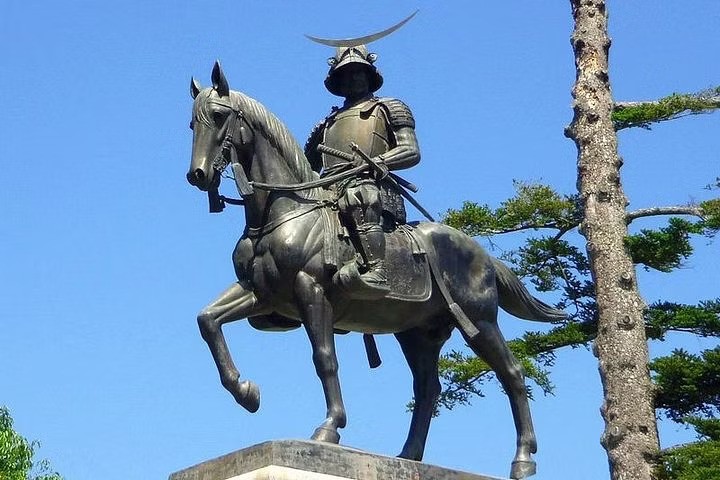
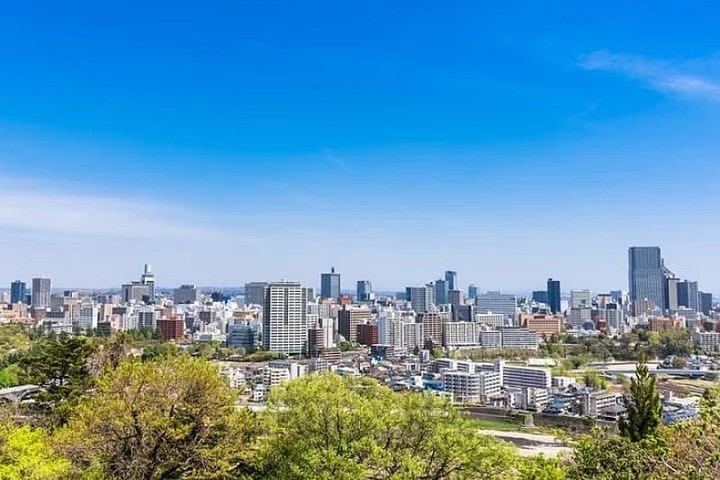
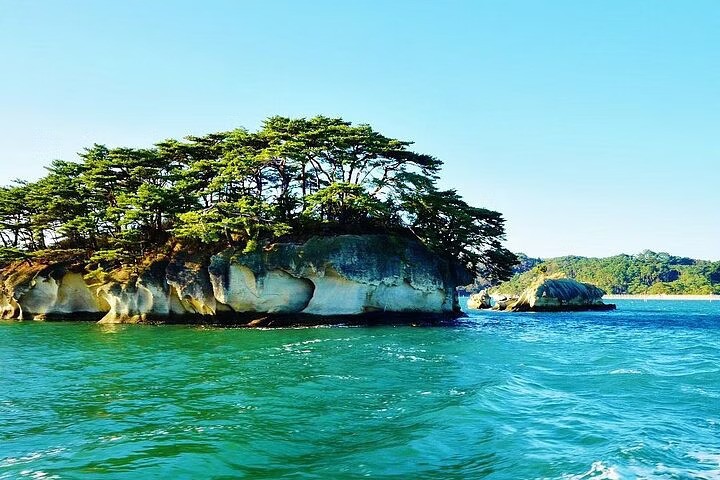
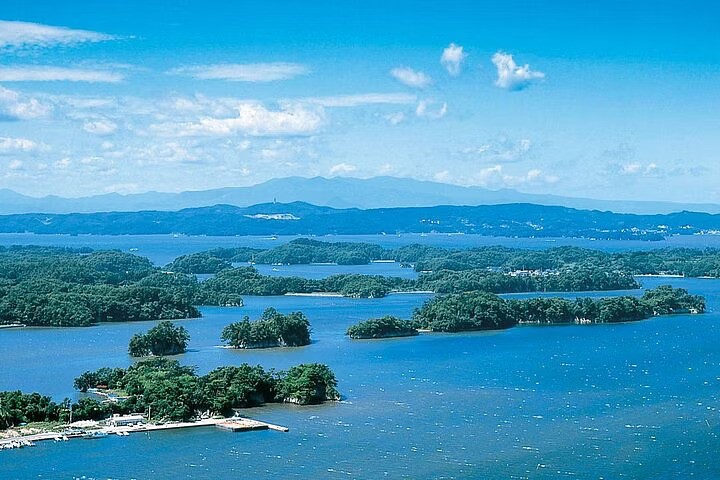
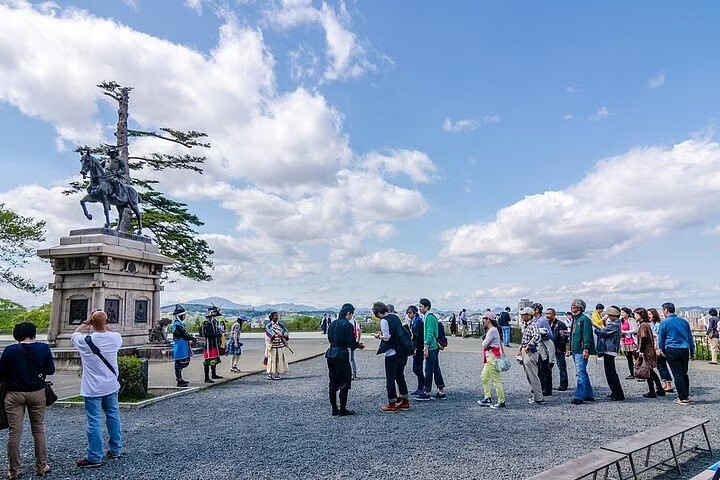





This value-packed trip with a government-licensed and experienced multilingual tour guide is a fantastic and efficient way to explore Sendai and Matsushima! Sendai is a city that sits at the doorstep of the nation’s wilder side. It’s a day trip from secluded mountain retreats, rugged coastlines, and remote islands. At the same time, it’s one of Japan’s most modern and sophisticated cities with a culinary scene that will challenge and surprise. Let us know what you would like to experience, and we will customize a four-hours tour that’s best for you!
Highlights

Explore Sendai / Matsushima in 4 hours!

You can choose 2-3 sites to customize your own itinerary!

Guided by english speaking guide!

Duration
4 hours

Offered in
English
What is included

Licensed Local English Speaking Guide

Customizable Tour of your choice of 2-3 sites from the list

Meet up with guide on foot within designated area of Sendai
What is not included

Transportation fees, Entrance fees, Lunch, and Other personal expenses

Private transportation

You cannot combine multiple tour groups

Guide Entry fees are only covered for sights listed under What to Expect.
Enjoy a dynamic 4-hour exploration where you can curate your own itinerary by selecting 2-3 of the most captivating sites that align with your interests. Whether you’re drawn to scenic landscapes, historical landmarks, or cultural attractions, this flexible adventure allows you to tailor your experience. Immerse yourself in the sights, sounds, and atmosphere of each carefully chosen location, making the most of every moment as you explore at your own pace.
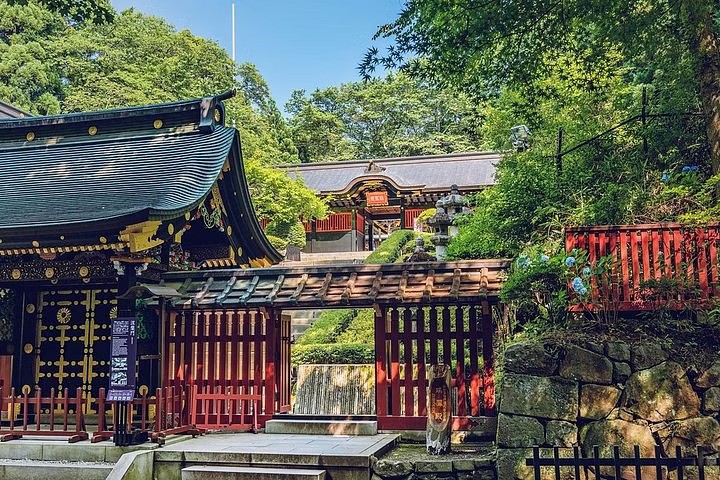
You can choose 2-3 sites from the list!
Zuihoden
Zuihoden is also known as the Mausoleum of Date Masamune who was the first lord of the Sendai Domain. He was also known for being a great architect and is known for having designed this building during the Momoyama Period. Zuihoden is a riot of gorgeous wood carvings and panels as well as some pretty art work and you can also go for a walk around the grounds. The paths are shaded by beautiful cedar trees which are also mean to be a symbol of the longevity of the Date family.
The Sendai Castle Ruins
The Sendai Castle Ruins were the inspiration for a famous Japanese poem called ‘The moon over the desolate castle’ and this tells you all you need to know about their condition now. The ruins also do include a model of the original gate to give you a feel of how Sendai Castle would have looked in the days of old. There is also a small museum here that takes you through the history of the castle although don’t expect anything too grand as Sendai is not one of the cities in Japan that is best known for a complete or particularly impressive castle. If that is what you are looking for then there are plenty of other options in other cities.
SS 30 Observation Lounge
If you want to get the best views in Sendai, then you need to head to SS 30 Observation Lounge. This building is actually an office block so there is not much to check out here except for two observation decks on the 29th and 30th floors. These are free to visit and give you panoramic vistas across all of Sendai so try to come in the morning or the late afternoon when you will get the best photo opportunities from the decks.
The Museum of the Forest of Depths of the Earth
The Museum of the Forest of Depths of the Earth is dedicated to telling you the story of the stone age in Japan. On a visit here you can find out all how the Saki Stone Age would have looked in the days of old and learn more about the excavation of the Tomizawa Ruins. The museum has a huge number of galleries and if you want to know more about the 20,000-year Saki Stone Age then this is the best place to come.
Kirin Beer Sendai Factory
Discover Kirin's special production methods and the secret of the delicious taste. You will discover how to enjoy the KIRIN ICHIBAN brewery tour.
Matsushima
Located half an hour outside of Sendai, Matsushima (松島) is famous for its bay, which is dotted by many pine clad islets and has been ranked one of Japan's three most scenic views for centuries. The small town is also known for Zuiganji, one of the Tohoku Region's most important Zen temples. Matsushima was hit by the earthquake and tsunami of March 11, 2011, but escaped major damage thanks to its protected location inside the island dotted bay. Most tourist attractions, shops and hotels reopened within a few weeks or months of the earthquake.
Zuiganji
Zuiganji (瑞巌寺) is one of the Tohoku Region's most famous and prominent Zen temples and is well known for its beautifully gilded and painted sliding doors (fusuma). Zuiganji was originally founded in 828 as a temple of the Tendai sect and was converted into a Zen temple during the Kamakura Period (1192-1333). After years of decline, Zuiganji was restored to prominence by the feudal lord Date Masamune who rebuilt it as his family temple in 1609.
Fukuura Island
Fukuura Island (福浦島, Fukuurajima) is one of the few pines covered islands in Matsushima Bay that is accessible to the public. The island is reached via a 252 meter long, red painted bridge. The bridge was damaged by the tsunami of March 11, 2011, and had to undergo repair works.
Entsuin Temple
Entsuin Temple (円通院, Entsūin) was built in 1647 next to Matsushima's most important temple, Zuiganji Temple, to house the mausoleum of Date Mitsumune, the son of the ruling local feudal lord Date Terumune. The temple was built in mourning and is devoted to Kannon, the Buddhist goddess of mercy, as Mitsumune died an untimely death at the age of 19.
Kanrantei
Kanrantei (観瀾亭) is a Momoyama-style tea house originally built in Kyoto by Toyotomi Hideyoshi, who gave it to Date Masamune for his service. Date's son eventually moved it to its current location overlooking Matsushima Bay. Kanrantei means "place to view ripples on water", due to its beautiful view over the water and surrounding islands.
Godaido
Godaido (五大堂, Godaidō) is a small temple hall on an islet just next to the pier. Due to its prominent location, it has become a symbol of Matsushima. Godaido was built in 807 and contains five statues which were enshrined by the same priest who founded nearby Zuiganji. The statues are displayed to the public only once every 33 years and were last displayed in 2006.
Oshima
Oshima (雄島) is a small, pine tree-covered island close to the pier of Matsushima. The island can be accessed over a short bridge free of charge and offers some pleasant, short walks. There are multiple small shrines and viewpoints dotted about the island. Oshima used to be a retreat for monks, and decorated meditation caves can still be found on the island. The bridge to Oshima was destroyed in the 2011 tsunami but was rebuilt and reopened two years later.
Sendai City Museum
Sendai City Museum was built in the Sannomaru enclosure on the site of the remains of Sendai castle for the purpose of preserving, exhibiting, and studying a set of materials (cultural assets) donated by the Date family of Sendai (One of the samurai families that has continued since the Kamakura Era.). The museum houses a collection of documents from the Keicho mission to Europe—a national treasure that includes a portrait of Hasekura Tsunenaga that is also a national treasure as well as a registered UNESCO Memory of the World—and historical and artistic collections, mostly from the Edo period, that concern Sendai.

JGA